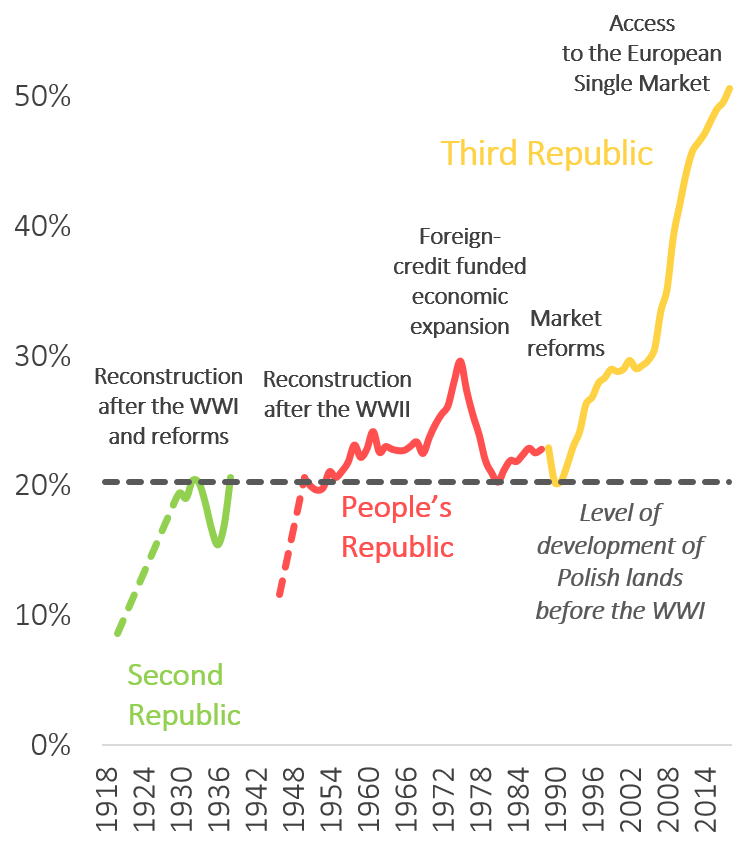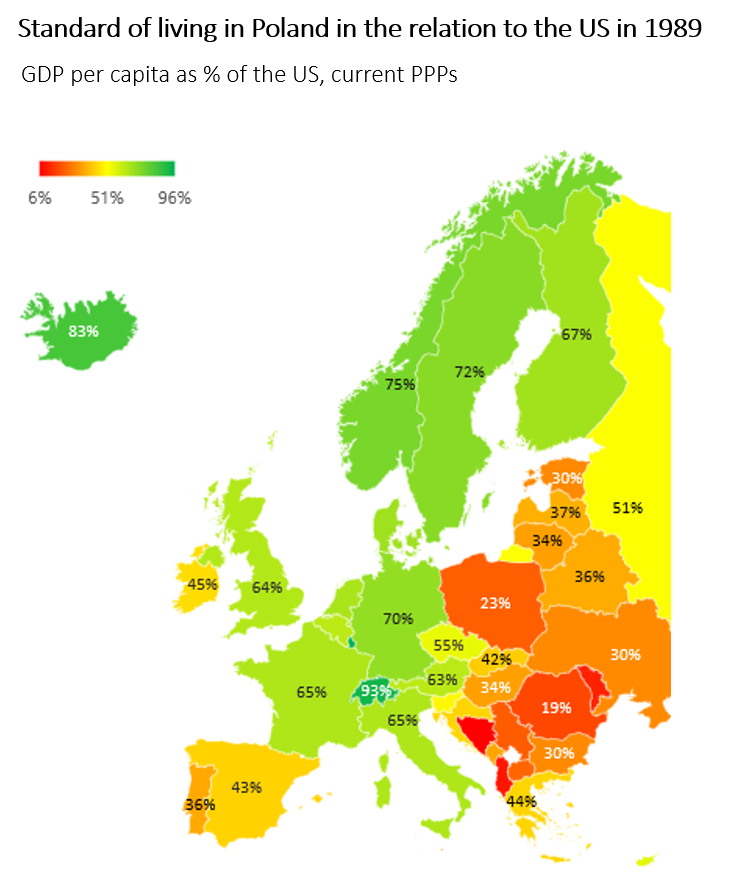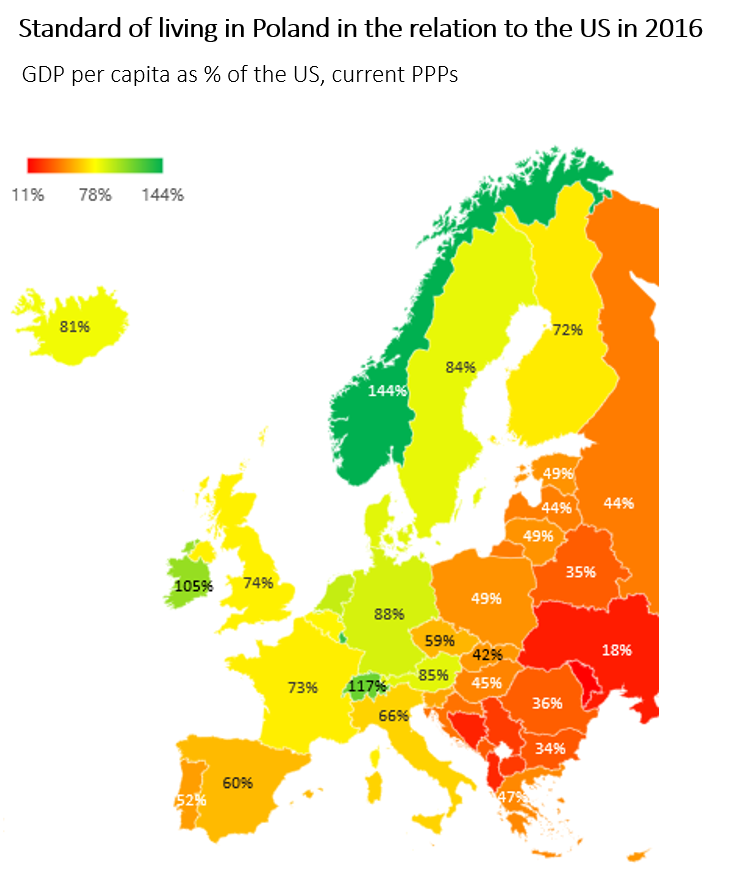2019-05-31
FOR Communication 21/2019: Polish Economic Miracle - The Road West

The standard of living of Poles in relation to the US, a global economic leader, today exceeds 50%. On the eve of World War I in 1913, at the end of the Second Republic of Poland in 1938 and at the end of the Polish People’s Republic in 1988, our standard of living oscillated around only 20% of that of Americans at that time.
- After the collapse of socialist industrialisation in the mid-1970s, in 1989 we were one of the poorest nations in Europe. We were even poorer than Ukraine, Bulgaria and Belarus.
- However, after the collapse of socialism, we were the first to launch wide-ranging reforms that enabled development through the market mechanism. We were the first in the socialist bloc to chase the capitalist standard of living.
- Accession to the European Union opened the common market to Polish companies, eventually integrating them into the European economy.
- Further success depends on reforms limiting the harmful impact of politics on the economy, including the rule of law, which distinguishes the developed economies of the West from the rest of the world.


- After the opening of European labour markets, Poles moved mainly to the northern EU Member States, which apart from high wages are characterized by a wide range of economic freedom, flexible labour markets and competitive product markets. Unfortunately, Poland, together with Italy, remains behind the rest of Europe (22nd place) and in a rather distant place in the world (54th place) in the index of economic freedom.
-
Systemic transition is not just about impressive economic growth. Poland’s orientation towards the West also means an increase in the level of protection of human rights and other values that make up liberal democracy.
Authors:
Rafał Trzeciakowski, economist
[email protected]
Patryk Wachowiec, legal analyst
[email protected]
Files to download

